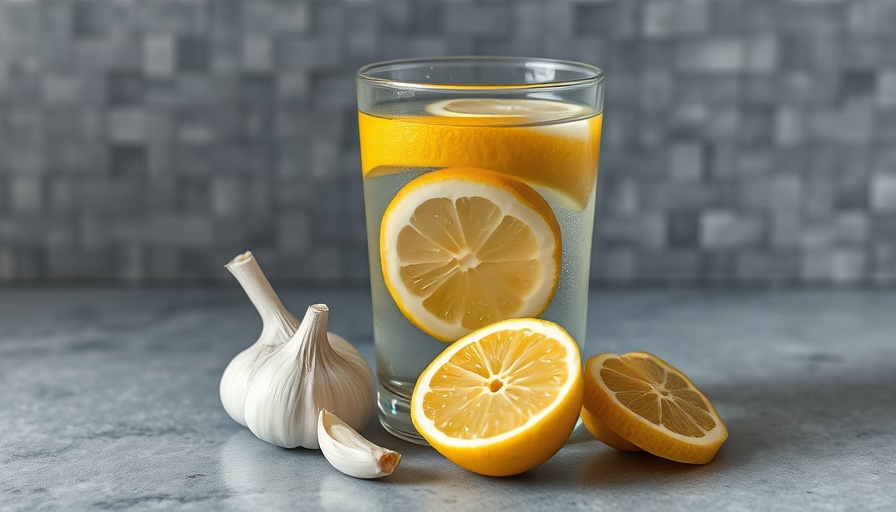
Unlocking the Benefits of Grape Leaves: A Nutritional Powerhouse
When we think of a grape vine, our minds often drift to luscious clusters of grapes that make for delightful snacks or refreshing beverages. However, many overlook the remarkable benefits found in its leaves. Traditionally used in Mediterranean cuisine for dolmas and salads, grape leaves are not just a culinary delight but a nutritional treasure worth incorporating into our diets.
The Nutritional Breakdown of Grape Leaves
A mere five grape leaves, about 14 grams, pack a surprising punch with their low-calorie count and rich nutrient profile. Each serving contains:
- Calories: 14 kcal
- Protein: 1 gram
- Carbohydrates: 2 grams
- Fiber: 1 gram
- Vitamin A: 77% of Daily Value (DV)
- Vitamin C: 6% of DV
- Vitamin K: 120% of DV
- Calcium: 4% of DV
- Iron: 5% of DV
These leaves showcase a significant source of vitamins and minerals that can enhance one's diet, making them an excellent option for anyone seeking to improve their nutritional intake.
Rich in Antioxidants: A Natural Defense Against Disease
Grape leaves are a powerhouse of antioxidants, including flavonoids and vitamin C. Antioxidants work by neutralizing free radicals in the body, which are harmful molecules linked to various chronic diseases. A study published in Food and Chemical Toxicology indicates that grape leaf extracts can improve the body’s antioxidant status, bolstering the immune system and reducing oxidative stress.
Bone Health: Strengthening From Within
Maintaining strong bones is crucial, especially as we age. Grape leaves are an excellent source of vitamin K, essential for preserving bone density and preventing fractures. Regular consumption can, therefore, play a key role in protecting against osteoporosis, particularly in women after menopause, who are more prone to bone density loss.
Support Your Vision with Nutrient-Dense Grape Leaves
Often celebrated for their beta-carotene content, grape leaves also provide vitamin A, which is vital for preserving eye health. This nutrient contributes to retinal function, preventing night blindness, and reducing the risk of age-related eye degeneration, making grape leaves a worthy addition for those looking to boost their vision.
Gut Health Benefits: Aiding Digestion
The dietary fiber in grape leaves promotes healthy digestion by enhancing gut motility, making it easier for food to pass through the digestive system and reducing the likelihood of constipation. Additionally, a healthy amount of fiber balances gut flora, essential for maintaining a thriving microbiome.
A Natural Anti-Inflammatory
Chronic inflammation has been linked to numerous health issues, including arthritis and inflammatory bowel diseases. Grape leaves contain beneficial components like quinic acid and quercetin, which have anti-inflammatory properties. Data from Frontiers in Chemistry suggests that polyphenols in grape leaves may reduce inflammatory markers in the body, fostering better overall health.
Heart Health: Nourishing Your Cardiovascular System
With their low levels of saturated fat and sodium, grape leaves contribute positively to heart health. They are rich in potassium and magnesium, which help regulate blood pressure levels. A diet incorporating grape leaves can thus support a healthy cardiovascular system, making them a fantastic choice for those interested in maintaining heart health.
Innovative Ways to Incorporate Grape Leaves into Your Diet
Integrating grape leaves into your meals can be both delightful and nutritious. Here are a few suggestions to make the most of this superfood:
- Stuffed Grape Leaves: A classic preparation, filling grape leaves with rice, vegetables, or lean meats provides a satisfying dish that packs great flavor.
- Salads: Fresh grape leaves can add a unique twist to salads, giving a crunchy texture and a slightly tart flavor.
- Soups and Stews: Incorporate chopped grape leaves into soups and stews for added nutrition and a depth of flavor.
The Final Word: Why Make Grape Leaves Part of Your Diet?
Adding grape leaves to your diet offers a myriad of health benefits, from boosting antioxidant levels to supporting bone and heart health. As a nutrient-packed, versatile ingredient, they can easily enhance a variety of dishes while contributing to overall wellness. Whether you enjoy them fresh, stuffed, or in a stew, these leaves are a culinary gem that should not be overlooked.
Conclusion: Embrace grape leaves as a staple in your diet. Their numerous health benefits not only add to your nutrient intake but also offer simple yet delightful meal options. Start reaping the rewards of this vibrant leaf today!
 Add Row
Add Row  Add
Add 




Write A Comment